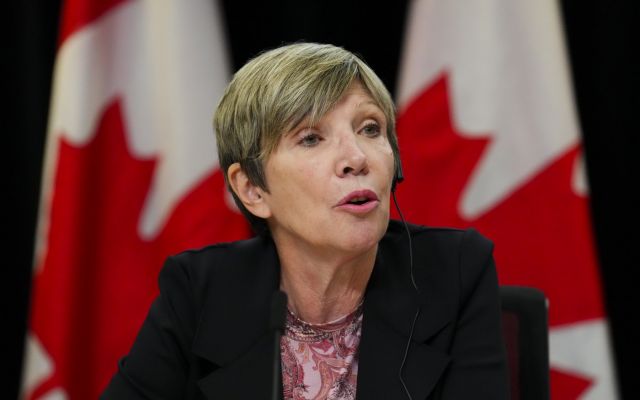Top Stories
Canada Faces Prolonged Wildfire Season as Fires Rage On

The wildfire season in Canada is projected to persist well into the fall, according to recent updates from federal officials. Emergency Management Minister Eleanor Olszewski indicated that regions across Western Canada and the East Coast should remain vigilant as extensive wildfire activity continues throughout the summer months.
Unprecedented Conditions Fuel Fires
The federal government’s forecasts reveal that significant portions of British Columbia and the prairie provinces are expected to experience drier and hotter conditions than usual. This summer has already seen higher-than-average temperatures nationwide, which is contributing to an alarming increase in wildfire activity.
Typically, fire activity in northern regions begins to decline by September as cooler weather sets in. However, this year is different. Federal officials warn that current fire conditions are likely to persist, with the potential for large fires to continue burning well into the fall. Olszewski emphasized during a virtual press conference in Ottawa that “wildfire season’s not slowing down.”
She noted the severity of the situation, stating, “Across the country, it’s been a really hot and dry summer, which has contributed to above-normal fire activity with fires primarily in British Columbia, Manitoba, Saskatchewan, and more recently in Newfoundland and Labrador, New Brunswick, and Nova Scotia.”
Record-Breaking Fire Activity
The current wildfire season is shaping up to be Canada’s second worst on record in terms of land burned. According to data from Public Safety Canada, approximately 78,000 square kilometres of land have been scorched in 2023, a figure that exceeds the entire area of New Brunswick. This total is second only to the amount burned in 2023 and is more than double the ten-year average.
At present, there are 707 active fires across Canada, with 68 classified as out of control. Since April, the situation has triggered 165 emergency events affecting 134 First Nations communities, leading to evacuations in 88 instances, as reported by Mandy Gull-Masty, Minister of Indigenous Services.
Firefighting efforts are underway across all provinces and territories. Currently, there are 563 firefighters actively combating the blazes, including personnel from six countries: the United States, New Zealand, Australia, Costa Rica, Chile, and Mexico. Over the summer, around 1,600 personnel from abroad have been deployed to assist in managing the wildfires.
The situation remains critical as the combination of heat waves and dry weather raises concerns, particularly in regions like Atlantic Canada where fires are currently burning across areas larger than 1,000 square kilometres. As the summer progresses, officials continue to monitor conditions closely, underscoring the importance of preparedness and vigilance in affected regions.

-

 Science3 months ago
Science3 months agoToyoake City Proposes Daily Two-Hour Smartphone Use Limit
-

 Top Stories3 months ago
Top Stories3 months agoPedestrian Fatally Injured in Esquimalt Collision on August 14
-

 Health3 months ago
Health3 months agoB.C. Review Reveals Urgent Need for Rare-Disease Drug Reforms
-

 Technology3 months ago
Technology3 months agoDark Adventure Game “Bye Sweet Carole” Set for October Release
-

 World3 months ago
World3 months agoJimmy Lai’s Defense Challenges Charges Under National Security Law
-

 Lifestyle3 months ago
Lifestyle3 months agoVictoria’s Pop-Up Shop Shines Light on B.C.’s Wolf Cull
-

 Technology3 months ago
Technology3 months agoKonami Revives Iconic Metal Gear Solid Delta Ahead of Release
-

 Technology3 months ago
Technology3 months agoApple Expands Self-Service Repair Program to Canada
-

 Technology3 months ago
Technology3 months agoSnapmaker U1 Color 3D Printer Redefines Speed and Sustainability
-

 Technology3 months ago
Technology3 months agoAION Folding Knife: Redefining EDC Design with Premium Materials
-

 Business3 months ago
Business3 months agoGordon Murray Automotive Unveils S1 LM and Le Mans GTR at Monterey
-

 Technology3 months ago
Technology3 months agoSolve Today’s Wordle Challenge: Hints and Answer for August 19








